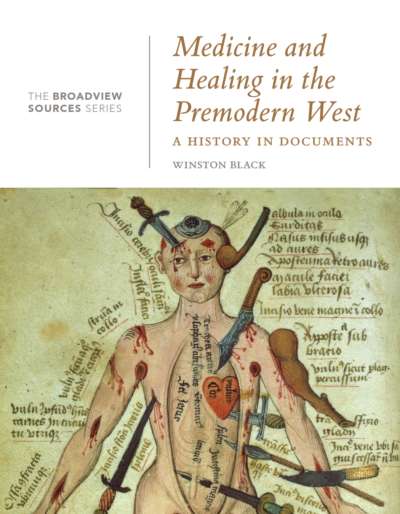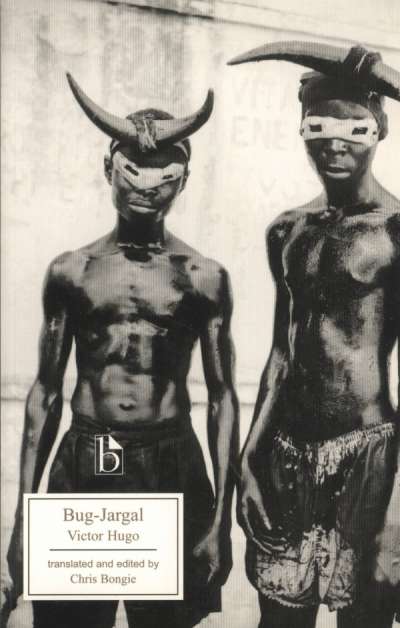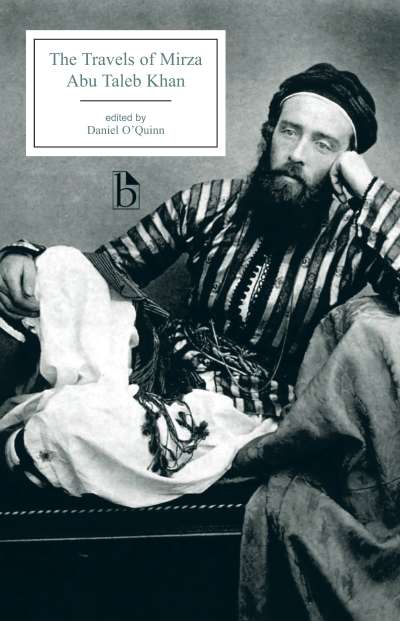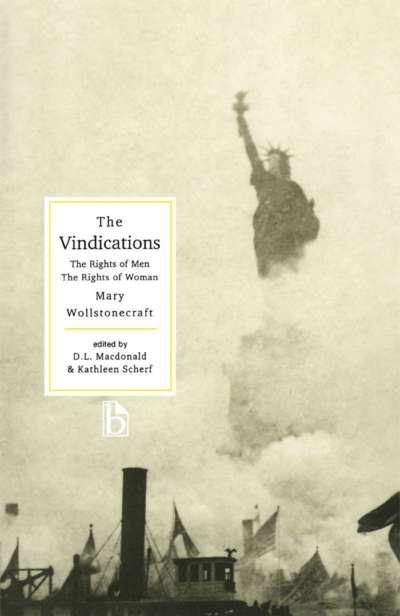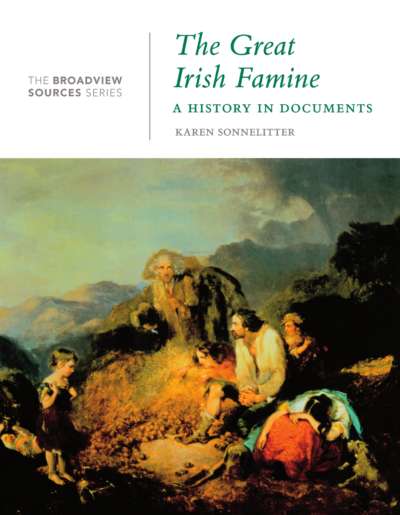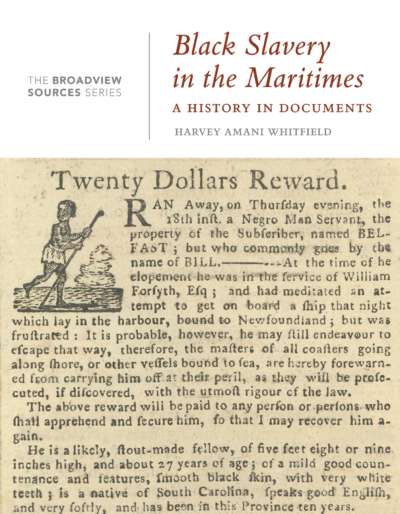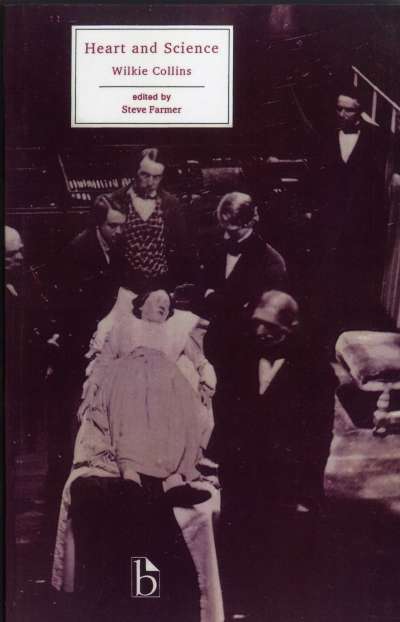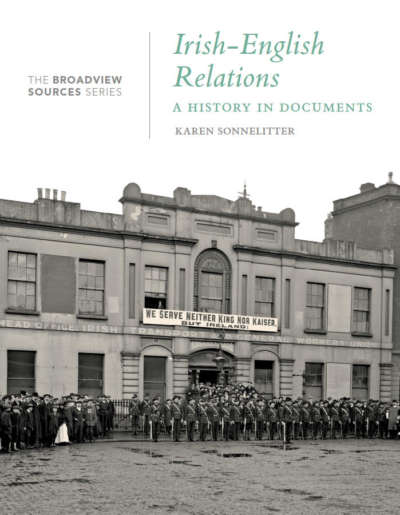European Racism provides more than 130 primary sources—from religious tracts, legal codes, and government edicts, to novel excerpts, paintings, and songs—to help readers trace the development and spread of racism in Europe from the Middle Ages to the present day.
The volume is organized into six chapters revealing how Europeans developed racist attitudes toward various groups: Jews, Muslims, Black Africans, Asians, the Romani, and global Indigenous Peoples. The editors highlight how racism intersects with gender roles, sexual identities, economic status, religious affiliation, national origin, and military alliances, while also stressing moments of historical anti-racist resistance.
Authors provide a general volume introduction and six section introductions, and contextualizing headnotes accompany each document; as well, marginal glossing throughout helps students with unfamiliar references and terminology.
Alternative (Chronological) Table of Contents
Introduction
Chronology
Questions to Consider
Part 1: Racism Against Jewish Peoples
- Introduction
- 1. From John 8:31–59, 18:33–40. 19:1–7, 12, 14–16 (Revised Standard Version)
- 2. From Thomas of Monmouth, “The Life and Miracles of St. William of Norwich” (c. 1173)
- 3. Image: Crucifixion of William of Norwich, from a Church in Loddon, UK (15th Century)
- 4. From The Bull of Pope Gregory X (1272)
- 5. Example of a Purity of Blood Law: Anonymous, Sentencia-Estatuto de Toledo (1449)
- 6. Image: Woodcut Portraying the 1475 Death of Simon of Trent (1493)
- 7. From Martin Luther, On the Jews and Their Lies (1543)
- 8. From Edward Nicholas, An Apology for the Honorable Nation of the Jews (1648)
- 9. From William Prynne, A Short Demurrer to the Jewes (1656)
- 10. From D.L., Israels Condition and Cause Pleaded (1656)
- 11. From Jan Jacob Mauricius, Account of a Ritual Murder Accusation in Nijmegen (1715)
- 12. Images of the Judensau, Frankfurt (18th Century)
- 13. From Frederick William III, King of Prussia, “Edict Concerning the Civil Status of the Jews in the Prussian State” (1812)
- 14. Caricature: Thomas Rowlandson, Ladies Trading on Their Own Bottom or Solomon Enjoys Himself with Two Pretty Christian Girls (1810)
- 15. From Mary Antin, “A Little Jewish Girl in the Russian Pale” (1890)
- 16. Caricature: Émile Courtet, “Jewish Virtues According to Gall’s Method” (1893) and Photograph of Alfred Dreyfus (1894)
- 17. “Jewish Massacre Denounced: East Side Mass Meeting Plans to Help the Victims of Russians in Kishinev” (1903)
- 18. From Thomas Athol Joyce and Northcote W. Thomas, Women of All Nations. A Record of their Characteristics, Habits, Manners, Customs, and Influence (1909)
- 19. Julius Streicher, “The Murderous People” (1934)
- 20. Pages from the Children’s Storybook The Poisonous Mushroom and the Board Game: “Jews Out!” (1938)
- 21. From Eta Fuchs Berk, Chosen: A Holocaust Memoir (1992)
- 22. From “Conversation with Shaul Ladany, An Olympian Who Survived the Holocaust and the Munich Massacre” (2020)
- 23. “Anti-Semitism Continues to Mar Presidential Politics in Poland” (1990)
Part 2: Racism against Muslim Peoples
- Introduction
- 24. A Spanish Muslim, Ibn Ḥawqal, Comments on Sexual Relations between Muslim men and Christian Women (10th century)
- 25. Anonymous, Here after Followeth a Lytell Treatyse agaynst Mahumet and his Cursed Secte (1530)
- 26. Martin Luther, On War Against the Turks (1529)
- 27. Desiderius Erasmus of Rotterdam, On War Against the Turks (De bello turcico) (1530)
- 28. From Henrick van Haestens and Christoffel von Sichem, Abominations of the Foremost Head Heretics (1608)
- 29. Ahmad bin Qasim (al-Hajan) in France, 1611–13: A Muslim Responds
- 30. From Henrick van Haestens, Abomination of the Head Heretics (1658)
- 31. From Book of a Thousand Questions (1657)
- 32. From Cornelius Hazart, Church History of the Entire World (1671)
- 33. From John Hughes, The Siege of Damascus. A Tragedy (1720)
- 34. From Voltaire, Mahomet: The Impostor—A Tragedy Marked with the Variations of the Manager’s Book at the Theatre-Royal in Drury-Lane (1796)
- 35. Hymn: Charles Wesley, Sun of Unclouded Righteousness (1758)
- 36. Paintings: Jean-Léon Gérôme, Pool in a Harem (1876) and Snake Charmer (1879)
- 37. Eliza Fay, “Letter: On Board Ship, in the Red Sea, Near Suez,” Original Letters from India (1779)
- 38. Russian Anti-Turkish World War I Propaganda Poster: “Turkish Cowardice and Valiant Prowess” (1914)
- 39. Correspondence about Moulvi Sadruddin, Imam of the Woking Mosque, and the Burial of Muslim Soldiers in England (1915)
- 40. From Mahfoud Rezigat, “It Was a Horrible Night” (1961)
- 41. The Heidelberg Circle, “Heidelberg Manifesto” (1982)
- 42. Photo: Jochen Eckel, The Solingen Arson Attack (1993)
- 43. From “The Courage of a Mother: Kadefa Rizvanović,” (1992–1995)
- 44. “UN Rights Chief ‘Appalled’ at Recent Treatment of Refugees, Migrants by Hungarian Authorities” (2015)
- 45. Hillary Margolis, “Denmark’s Face Veil Ban Latest in Harmful Trend” (2018)
- 46. United Nations Secretary-General’s Video Message on the International Day to Combat Islamophobia (2021)
Part 3: Racism Against Black Peoples
- Introduction
- 47. Image: The “Blemmyes” (A European Representation of Africans) (c. 1400s)
- 48. From George Best, A Trve Discovrse of the Late Voyage of Discouerie (1578)
- 49. Elizabeth I, “An Open Letter to the Lord Mayor of London” (1596)
- 50. Duarte Lopez, A Reporte of the Kingdome of Congo (1597)
- 51. Johan Isaksson Pontanus, Historical Description of the Very Widely Famed Merchant City of Amsterdam (1614)
- 52. Pieter Jansz Twisck’s Story of the Black Moor and the Jesuit, from his History of the Fall of Tyranny (1620)
- 53. Sir Thomas Herbert, A Relation of Some Yeares Travaile … Africa (1634)
- 54. A True Relation of the Inhumane and Unparallel’d Actions, and Barbarous Murders of Negroes or Moors: Committed on three English-men in Old Calabar in Guinny (1672)
- 55. From George Keith, An Exhortation & Caution to Friends Concerning Buying or Keeping of Negroes (1693)
- 56. From Edward Long, The History of Jamaica (1774)
- 57. William Cowper, The Negro’s Complaint: A Poem (1788)
- 58. Olaudah Equiano Describes Conditions on a Slave Ship Crossing the Atlantic, in The Interesting Narrative of the Life of Olaudah Equiano (1789)
- 59. Society for the Friends of Blacks in Paris, “Address to the National Assembly for the Abolition of the Trade in Blacks” (1790)
- 60. Advertisement: Just Arrived from London … the Hottentot Venus: The Only One Ever Exhibited in Europe (c. 1810)
- 61. Advertisement: A Black Man Buying some of J. Morison’s Pills, Hoping They Will Make Him White (c. 1825)
- 62. From Josiah Clark Nott and George Gliddon, Types of Mankind or Ethnological Researches, Based upon the Ancient Monuments, Paintings, Sculptures, and Crania of Races, and upon the Natural, Geographical, Philological and Biblical History (1854)
- 63. From Arthur de Gobineau, The Inequality of Human Races (1853–55)
- 64. Advertisement: The Zulu Kaffirs, or WILD MEN! of Africa … (1861)
- 65. Advertisement: Pears’ Soap: Matchless for the Complexion (c. 1880)
- 66. From Manuel Timbu, Eyewitness Account of Genocide in German Southwest Africa in Report on the Natives of South-West Africa and Their Treatment by Germany (1918)
- 67. From Karl Pearson, National Life from the Standpoint of Science (1905)
- 68. “A Plan to Highlight the Academic and Professional Accomplishments of ‘Coloured’ Men” (1913)
- 69. From E.D. Morel, The Horror on the Rhine (1921)
- 70. Poster: a Degenerate Music Exhibition in Nazi Germany (1938)
- 71. From Frantz Fanon, Black Skin, White Masks (1952)
- 72. Enoch Powell, “Rivers of Blood” Speech (1968)
- 73. Afrophobia in European School Curriculums, European Network Against Racism Shadow Report, 2014–2015 (2015)
Part 4: Racism Against Asian Peoples
- Introduction
- 74. Marco Polo’s Account of Mongolian China, from “The Travels of Marco Polo” (c. 1295)
- 75. From a Translated Spanish Pamphlet called “News from China” (1577)
- 76. From Peter Martyr d’Anghiera’s The History of Travayle in the West and East Indies, and other Countreys Lying Eyther Way (1577)
- 77. From Jan Huyghen van Linschoten, His Discours of Voyages into the Easte and West Indies (1598)
- 78. From José de Acosta, The Naturall and Morall Historie of the East and West Indies (1604)
- 79. From Johan Isaksson Pontanus, Historical Description of the Very Widely Famed Merchant City of Amsterdam (1614)
- 80. From Cornelius Hazar, Church History of the Entire World, 1671: A Netherlandic Jesuit’s perspective on the Mongols (Tartars)
- 81. From Louis de Gaya and Thomas Brown, Marriage Ceremonies (1703)
- 82. Leaflet: Advertising the Appearances by “Two Chinese Ladies” in Elaborate National Costume, Singing and Playing Traditional Chinese Instruments (1826)
- 83. Arthur de Gobineau on Characteristics of the “Yellow Race” in The Inequality of Human Races (1855)
- 84. From Joseph Salter, The Asiatic in England: Sketches of Sixteen Years’ Work Among Orientals (1873)
- 85. From Fanny L. Rains, Travel Writings on Domestic Life in Singapore (1878)
- 86. Political Cartoon: Henri Meyer, “China—the Cake of Kings and … of Emperors” (1898)
- 87. From Pierre Loti, Carmen Sylva and Sketches from the Orient (1912)
- 88. From P. Daryl Klein, Second Lieutenant in the World War I Chinese Labour Corp (1919)
- 89. From George Orwell, Burmese Days (1934)
- 90. Images: British Anti-Japanese Images from World War II (1943–45)
- 91. Susanné Seong-Eun Bergsten, “Abused and Shunned—Being of Asian Descent in Sweden during COVID-19” (2020)
- 92. “Six Years a Slave: Indian Farm Workers Exploited in Italy” (2021)
Part 5: Racism Against Romani Peoples
- Introduction
- 93. Illustration: The First Roma in Bern, Switzerland (1484)
- 94. From King Henry VIII of England’s Statute against Egyptians (1530/31)
- 95. From King Philip and Queen Mary of England, “Egyptians Act” (1554)
- 96. Queen Elizabeth I of England, “For the Punishment of Vagabonds calling themselves Egyptians” (1563)
- 97. Thomas Dekker, Lanthorne and Candle-Light. Or The Bell-Mans Second (1609)
- 98. From Samuel Rid, The Art of Juggling or Legerdemain (1612)
- 99. From King George III of Great Britain, Repeal of the Egyptians’ Act (1783)
- 100. “The Gipsies,” The Times (1816)
- 101. From Victor Hugo, The Hunchback of Notre Dame (1831)
- 102. Engraving: A Family of Gypsies Sit in their Camp with a Child they have Stolen (1840)
- 103. Trading Card: The Gypsy Fortune Teller (c. 1870–90)
- 104. From “Gypsies of Hungary” (1909)
- 105. From Cesare Lombroso’s Criminological Classification of Romani as Atavistic Criminals in Criminal Man (1911)
- 106. Heinrich Himmler, “Fighting the Gypsy Plague” (1938)
- 107. Photo: Anthropologist Eva Justin Creating a Plaster Cast on a Romani Man (1938)
- 108. Holocaust Biographies of Maria Sava Moise and Stefan Moise (1943)
- 109. Great Britain House of Commons Debate on Gypsies in Dartford (1962)
- 110. Elena Gorolová Describes her Forced Sterilization by the Czechoslovakian Government (2009)
- 111. European Roma Rights Centre, “Mob Violence Against Roma in Poland,” Roma Rights Journal (1997)
- 112. Bernard Rorke, “A Spectre is Haunting Europe—Spike in Anti-Roma Pogroms as EU Election Campaigns Kick Off” (2019)
Part 6. Racism Against Indigenous Peoples
- Introduction
- 113. Spanish Bishop Condemns Spanish Treatment of Indigenous Peoples: Bartolomé de las Casas, The Spanish Colonie (1552, 1581)
- 114. Image: Jodocus Hondius’s Illustration of the Headless People of Guiana (1599)
- 115. Anonymous, Description of the Samoyeden Land in Tartary (1612)
- 116. King Charles I’s Decree against Irish Beggars (1629)
- 117. From Edmund Campion, Two Histories of Ireland (1633)
- 118. Henry More on Indigenous Peoples of the Americas, from his An Explanation of the Grand Mystery of Godliness (1660)
- 119. From Georgius Hornius and Balthasar Bekker, Church History, from the Creation of the World until the Year of the Lord (1666, 1685)
- 120. From Cristobal Acuna, Voyages and Discoveries in South-America (1698)
- 121. From Denis Diderot, Supplement to Bougainville’s Voyage (1772)
- 122. Image: Laplanders and Rein Deer as Exhibitions at the Egyptian Hall, Piccadilly (1822)
- 123. Charles Dickens on the “The Noble Savage” (1853)
- 124. From The Diary of Abraham Ulrikab (1880)
- 125. From Dr. Rudolf Virchow, “Eskimos at the Berlin Zoo,” Zeitschrift für Ethnologie (1880)
- 126. Advertisements: Rolls’s Best Virginia Tobacco (c. 1700s); Warpath Tobacco (c. 1885); “Cigar Store Indian” (2022)
- 127. From Benjamin Douglas Howard, Life with Trans-Siberian Savages (1893)
- 128. From Strickland Constable, Ireland from One or Two Neglected Points of View (1899)
- 129. From Paul Gauguin. Noa Noa. The Tahitian Journal (1901) and Three Tahitian Women (1896)
- 130. From James Bryce, “The Relations of the Advanced and the Backward Races of Mankind” (1902)
- 131. 1925 Russian Commentary on the Giliak Peoples, from Bruce Grant, In the Soviet House of Culture: A Century of Perestroikas (1995)
- 132. From Reginald Ruggles Gates, “The Australian Aborigines in a New Setting,” Man, The Royal Anthropological Institute of Great Britain and Ireland (1960)
- 133. United Nations, Declaration on the Rights of Indigenous Peoples (2007)
- 134. Nina Berglund, “Sámi Still Battling Discrimination” (2016)
Select Bibliography
Further Reading
Lisa Todd is Professor of History at University of New Brunswick, Fredericton.
Gary Waite is Professor Emeritus of History at University of New Brunswick, Fredericton.




